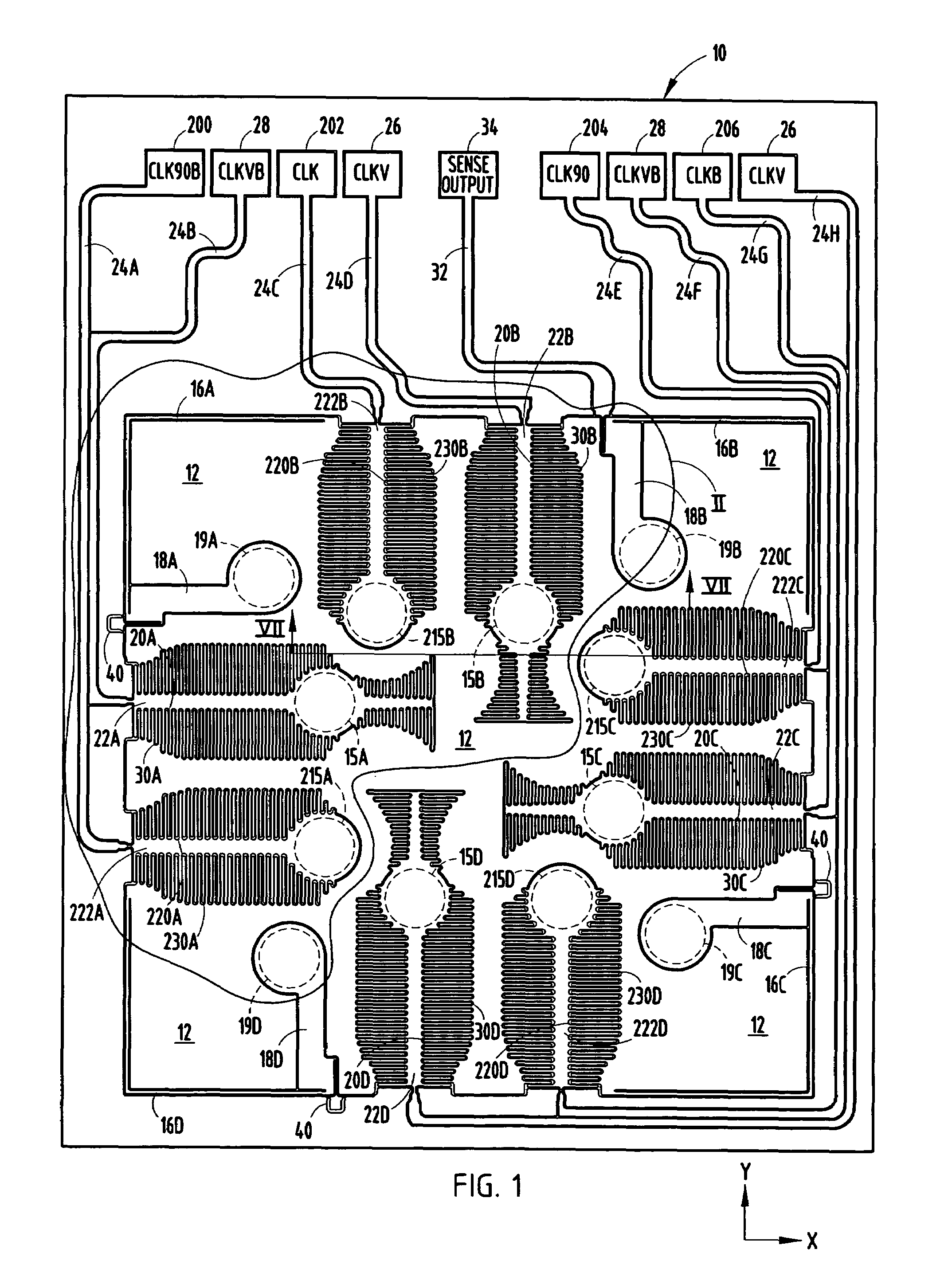Multiple-axis linear accelerometer
a linear accelerometer and multi-axis technology, applied in the field of accelerometers, can solve the problems of high cost and undesired packaging sensitivity of conventional vertical sensing accelerometers, and the large complexity of the vertical stack structure employed in the above conventional linear accelerometers, and achieve the effects of reducing the cost of vertical sensing accelerometers
- Summary
- Abstract
- Description
- Claims
- Application Information
AI Technical Summary
Benefits of technology
Problems solved by technology
Method used
Image
Examples
Embodiment Construction
[0023]Referring to FIGS. 1-7, an accelerometer 10 is illustrated according to one embodiment of the present invention for sensing acceleration along multiple orthogonal sensing axes. The accelerometer 10 shown and described herein is a three-axis linear accelerometer for sensing linear acceleration in both upward and downward directions of the vertical Z-axis, and in both negative and positive directions in both the X-axis and the Y-axis, according to one embodiment. The Z-axis extends perpendicular to the plane defined by the X- and Y-axes. The accelerometer 10 may be employed as a two-axis accelerometer for sensing linear acceleration in either of the X- and Y-axes, or any combination of X-, Y- and Z-axes, in addition to the vertical Z-axis. Further, it should be appreciated that the accelerometer 10 could be employed to sense angular acceleration or angular velocity, such as angular acceleration or angular velocity about the Z-axis, in addition to linear acceleration along the ve...
PUM
 Login to View More
Login to View More Abstract
Description
Claims
Application Information
 Login to View More
Login to View More - R&D
- Intellectual Property
- Life Sciences
- Materials
- Tech Scout
- Unparalleled Data Quality
- Higher Quality Content
- 60% Fewer Hallucinations
Browse by: Latest US Patents, China's latest patents, Technical Efficacy Thesaurus, Application Domain, Technology Topic, Popular Technical Reports.
© 2025 PatSnap. All rights reserved.Legal|Privacy policy|Modern Slavery Act Transparency Statement|Sitemap|About US| Contact US: help@patsnap.com



